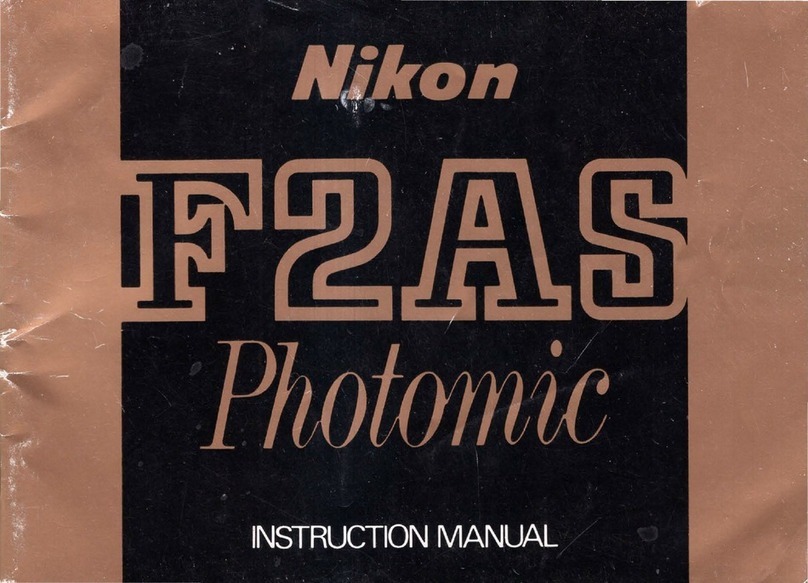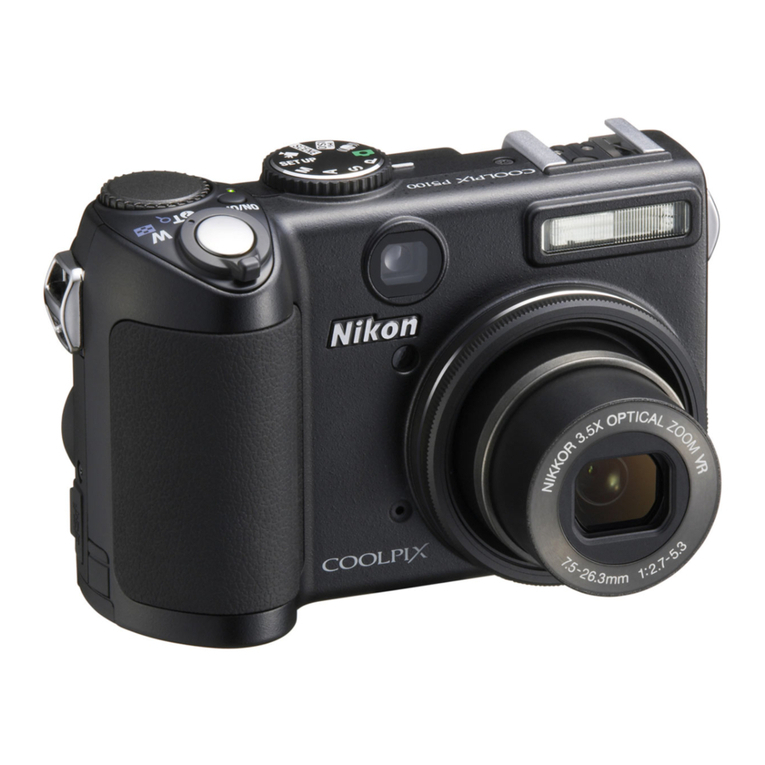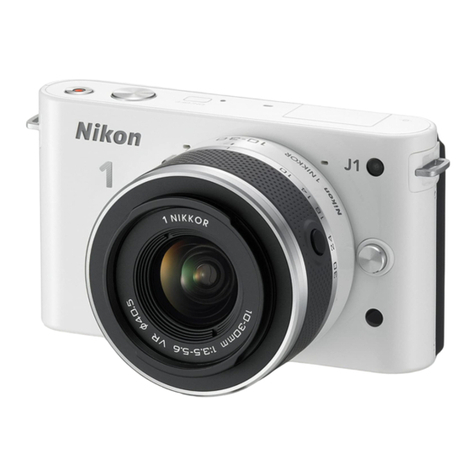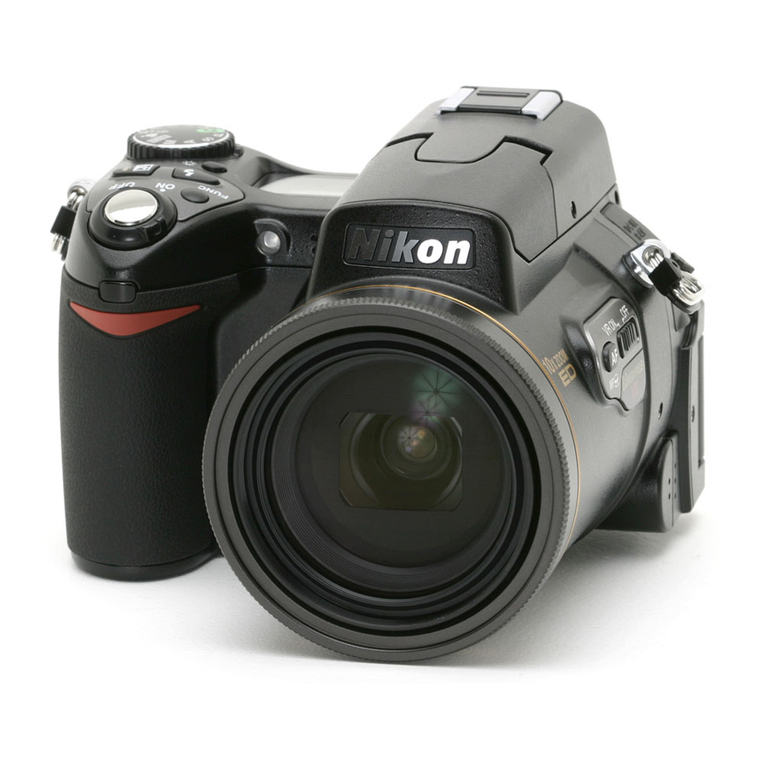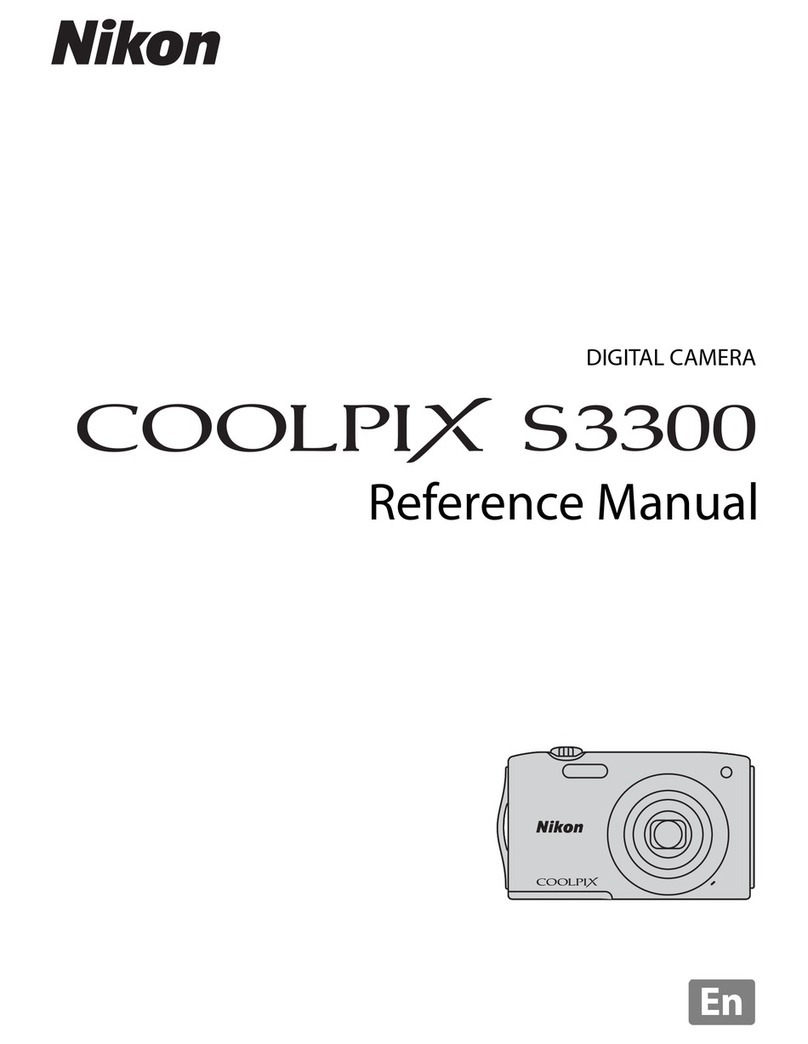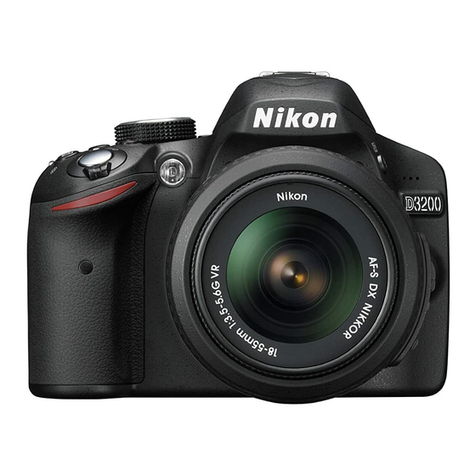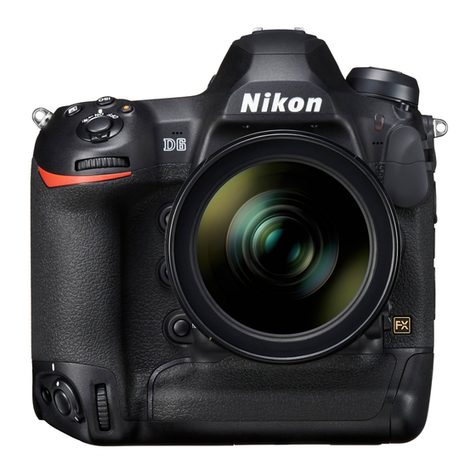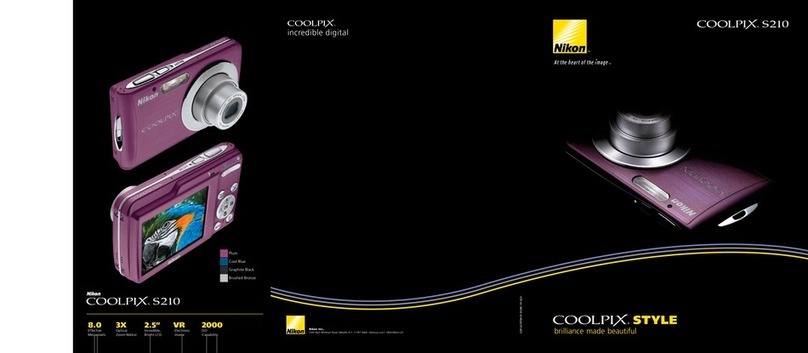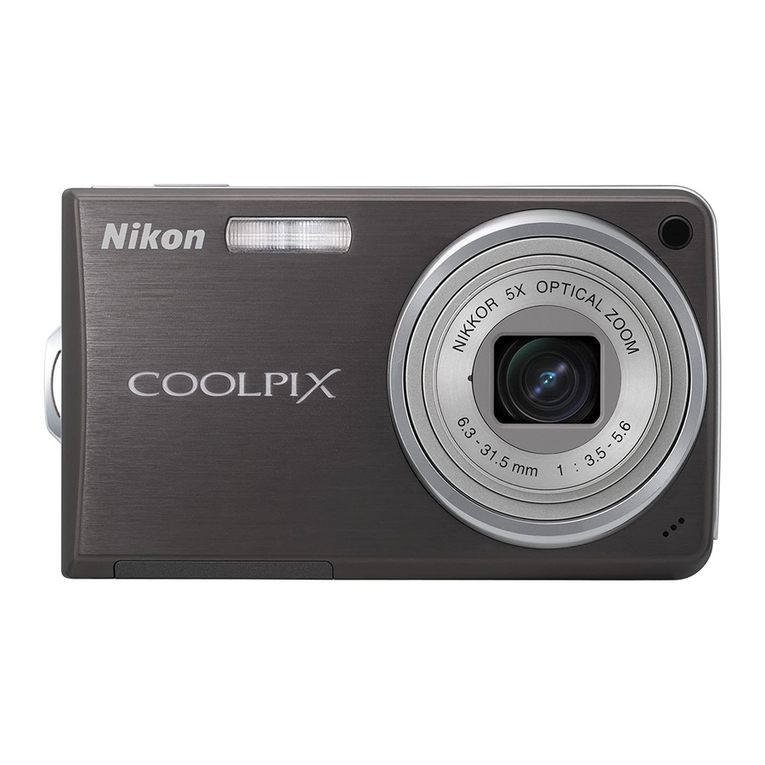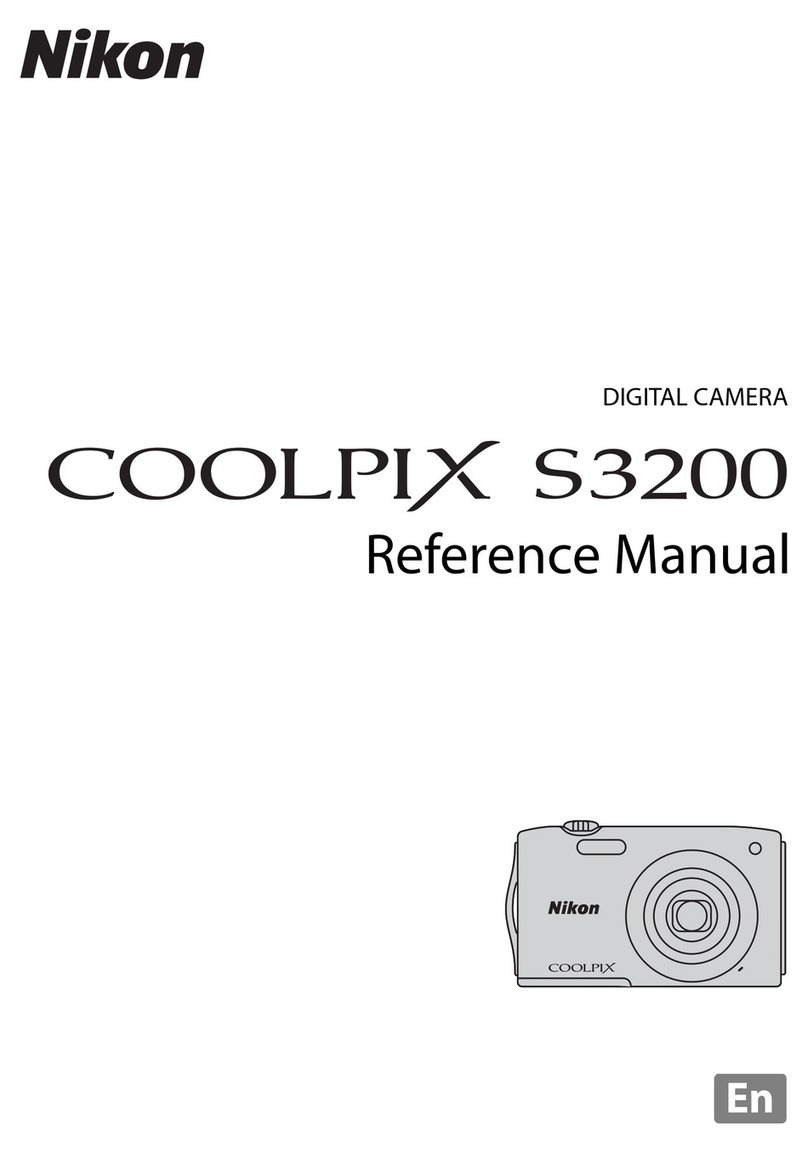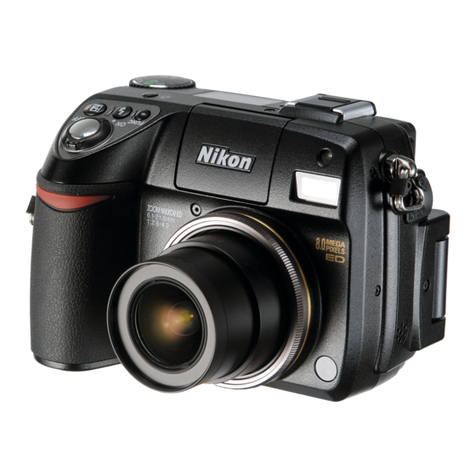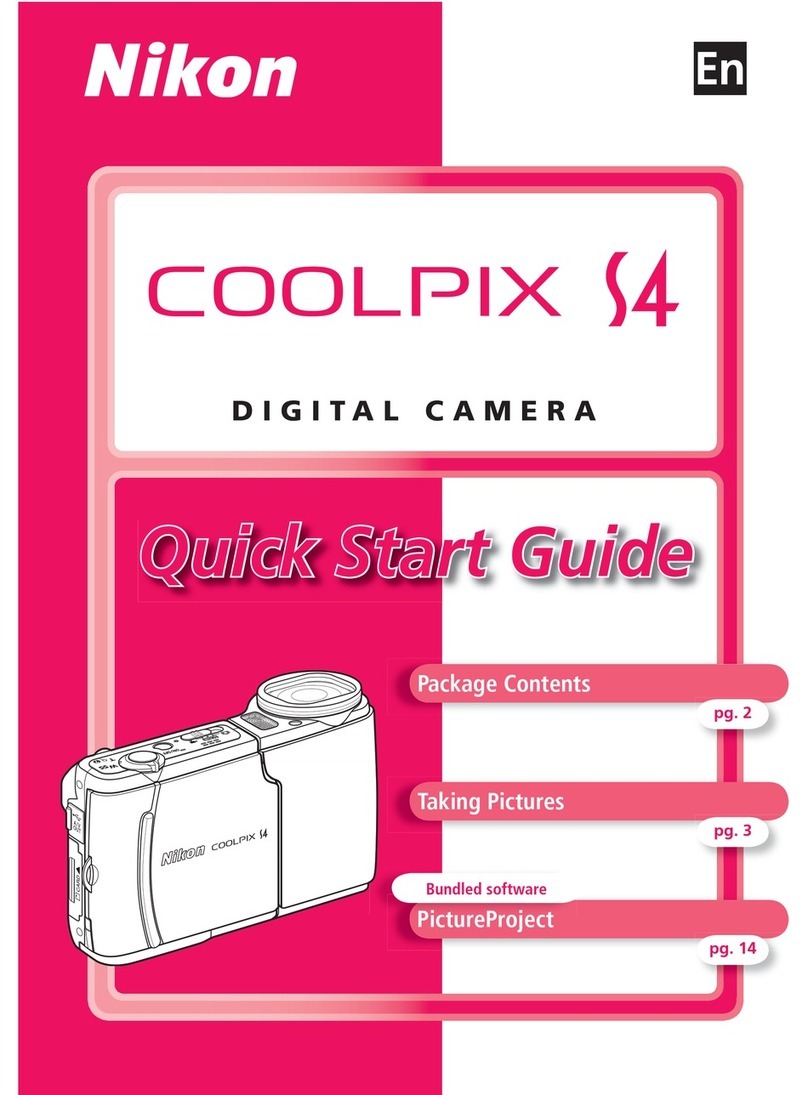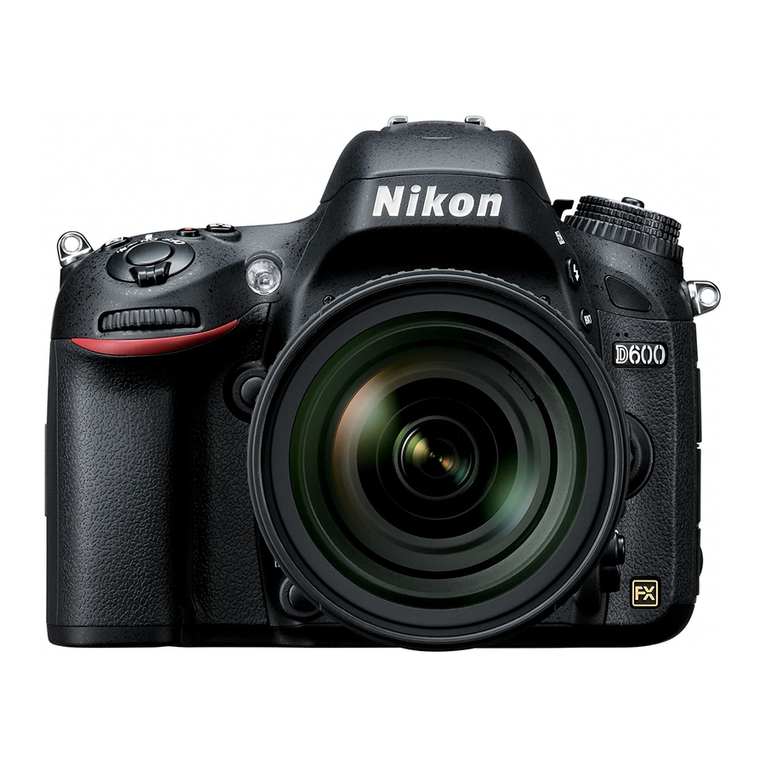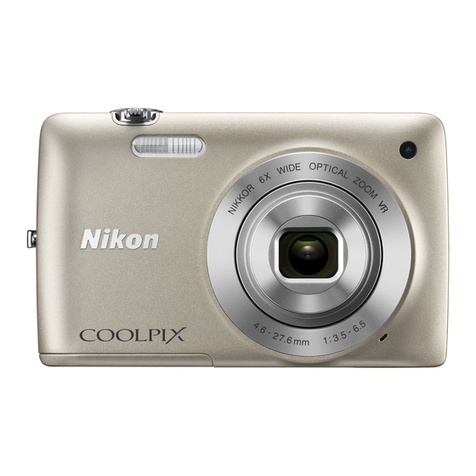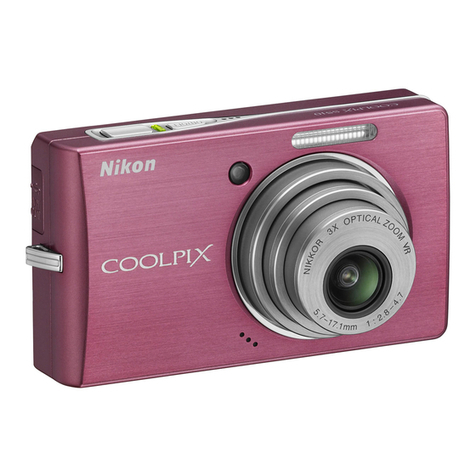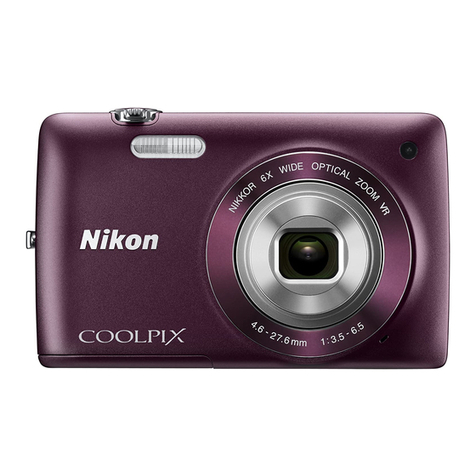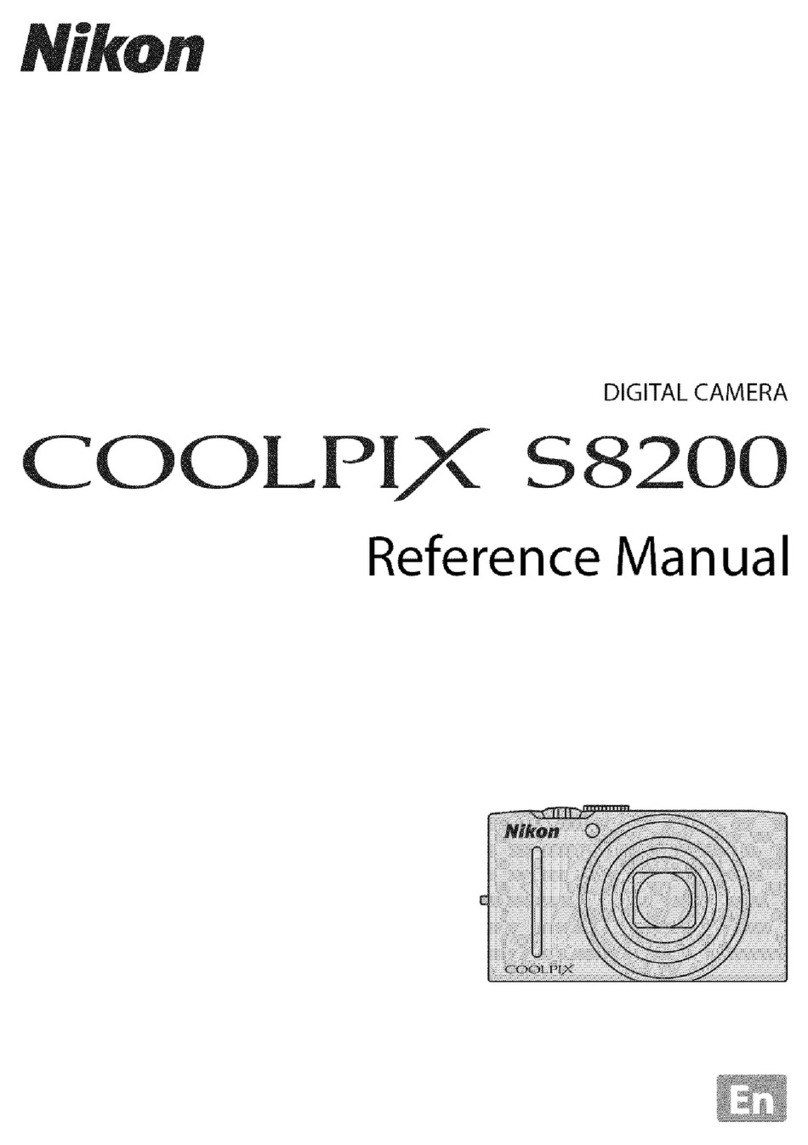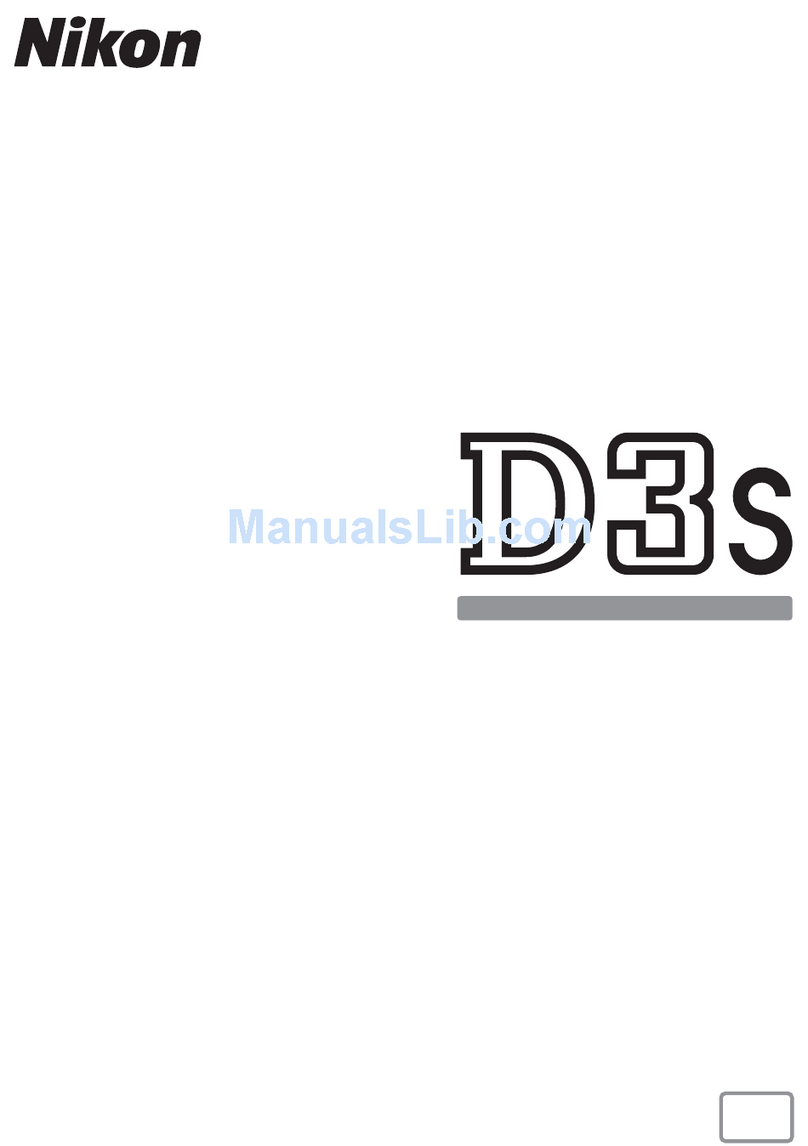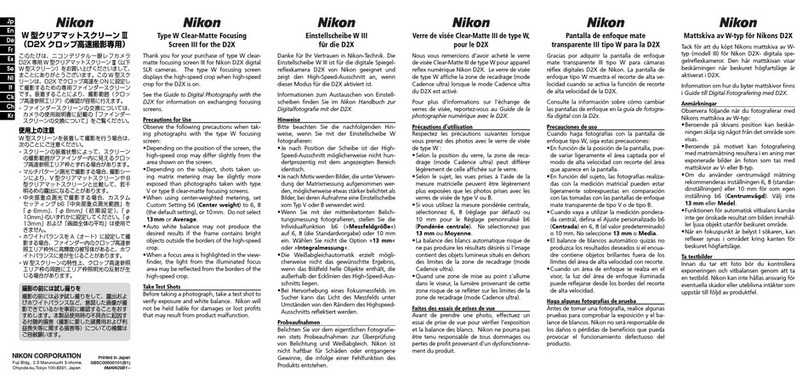E
5
Contents
Foreword .......................................................................................... 2
Accessories ...................................................................................... 3
Your Nikon camera features .............................................................. 4
Camera parts ................................................................................ 6-7
LCD panel indications ...................................................................... 6
Tips on using the Nuvis 300 ............................................................ 8
Getting started
Installing the battery/Checking battery power ................................... 9
Loading the film ....................................................................... 10-11
IX240 film cartridge ....................................................................... 11
Data recording function .................................................................. 12
Basic operation
Holding the camera properly .......................................................... 13
Shutter release operation ............................................................... 13
Viewfinder indications .................................................................... 14
Selecting a print type ...................................................................... 14
Adjusting diopter .............................................................................15
Zooming ........................................................................................ 15
Focusing and shooting ............................................................. 16-17
Difficult-to-focus subjects .............................................................. 17
Removing the film .......................................................................... 18
Take the exposed film cartridge to a photo lab. .............................. 19
To rewind the film in mid-roll ........................................................ 19
Advanced operation
How to use focus lock .................................................................... 20
Selecting the flash mode ................................................................ 21
Auto flash photography .................................................................. 21
Anytime flash mode ....................................................................... 22
Slow sync flash mode ............................................................... 22-23
Flash cancel mode ......................................................................... 23
Red-eye reduction mode ................................................................ 24
Self-timer operation ....................................................................... 25
Infinity focus .................................................................................. 25
Title recording function ..............................................................26-27
List of user imprinted titles ............................................................ 27
Setting the date and time .......................................................... 28-29
Other information
Troubleshooting ....................................................................... 30-31
Specifications ........................................................................... 32-33
For safe handling of the camera (WARNING/CAUTION) ........... 34-35
